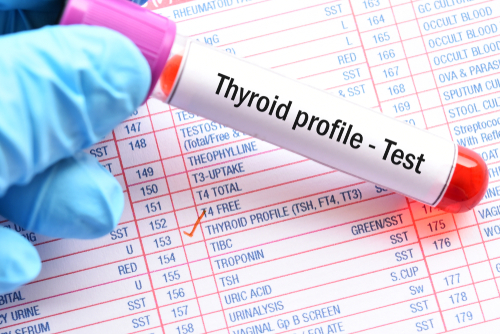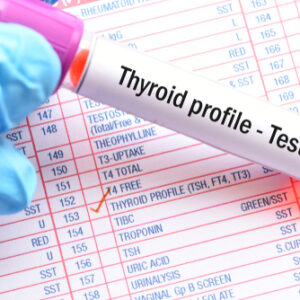What is a Renal Function Profile?
A Renal Profile includes testing several parameters: Urea, Blood Urea Nitrogen, Creatinine, Uric Acid, Calcium, Phosphorus, Sodium, Potassium, Chloride, BUN/Creatinine Ratio, Urea/Creatinine Ratio. Some laboratories calculate glomerular filtration rate/GFR (which is an estimation of how much blood is filtered through kidneys every minute).
Renal profile is done by taking a blood sample. RFT is ordered, if your doctor:
- thinks your kidneys may not be working properly which is known from signs and symptoms
- and if you have other conditions that can harm the kidneys, such as diabetes or high blood pressure
What are the parameters tested under RFP?
Albumin
Albumin is a protein found in the blood. If the kidneys are healthy, there should be very little protein in your urine – if any. However, if the kidneys are damaged, albumin may leak out of the kidneys and into your urine.
BUN (Blood Urea Nitrogen)
Urea nitrogen is a byproduct from the breakdown of food proteins. A normal BUN level is between 7 and 20. As kidney function decreases, the BUN level rises.
BUN-to-Creatinine Ratio (calculated)
The ratio of BUN to creatinine (BUN:creatinine) is usually between 10:1 and 20:1. An increased ratio may be due to a condition that causes a decrease in the flow of blood to the kidneys.
Calcium
Measuring calcium can help determine whether the kidneys are excreting the proper amount of calcium. Too much calcium can also help indicate kidney stones.
Carbon Dioxide
Your kidneys and lungs balance the levels of carbon dioxide, bicarbonate, and carbonic acid in the blood. High carbon dioxide levels can be used to help diagnose kidney disease.
Chloride
Chloride is an important electrolyte used by the body to maintain the proper blood volume, blood pressure, blood acidity, and balance of fluid in cells. An increased level of blood chloride may indicate kidney diseases like tubular acidosis, which is when the kidneys do not remove enough acid.
Creatinine
A waste product that comes from normal wear and tear on the body’s muscles. Creatinine levels in the blood vary depending on age, race, and body size, but a creatinine level greater than 1.2 for women or greater than 1.4 for men may be an indicator that the kidneys are not working properly. The level of creatinine in the blood rises as kidney disease progresses.
Estimated Glomerular Filtration Rate (calculated)
This is a calculated measurement of how well the kidneys are removing waste and excess fluid from the blood. Your age, race, sex, and creatinine levels are all considerations when this calculation is made. The normal value for eGFR is 90 or above but this can decrease with age. An eGFR below 60 is a sign that the kidneys are not working properly. An eGFR below 15 indicates kidney failure.
Glucose
Abnormally high levels of glucose in your blood (hyperglycemia) can indicate glycosuria. Renal glycosuria occurs when the renal tubules fail to reabsorb all glucose at a level that is normal.
Phosphorus
Functioning kidneys can remove extra phosphorus from your blood. Individuals with chronic kidney disease often cannot remove phosphorus from the blood very well. High phosphorus levels can cause damage to your body.
Potassium
Potassium is an electrolyte that assists in many bodily functions like water balance, digestion, and nerve impulses. Kidney disease can cause both high and low potassium levels
Sodium
Sodium is one of the three major electrolytes your body utilizes to control fluid balance inside and out of cells, among other functions. High sodium levels could indicate kidney disease because the body is unable to effectively remove the correct amount.
What are the healthy ranges of each test?
Results higher or lower than the normal range may indicate issues.
| Albumin | 3.4 -5.4g/dL |
| BUN (Blood Urea Nitrogen) | 10 – 20 mg/dL |
| BUN-to-Creatinine Ratio (calculated) | 5 – 18mg/dL |
| Calcium | 8.5 – 10.3mg/dL |
| Carbon Dioxide | Given in percentage of total blood composition, an adult’s blood should be made of less than 2.3% (or 0.023) of carbon dioxide. Smokers should have between 2.1% and 4.2% carbon dioxide. |
| Chloride | 96 – 106MEq/L |
| Creatinine | 0.9 to 1.5mg/dL for men and 0.6 to 1.1mg/dL for women |
| Estimated Glomerular Filtration Rate (calculated) | 90 – 120mL/minute |
| Glucose | <140mg/dL is ideal. Over 200mg/dl can indicate diabetes |
| Phosphorus | 2.5 to 4.5 mg/dL |
What could cause an abnormal Renal Profile report?
Tests of renal function can be used to assess overall renal function by direct measurement or to determine the presence of renal impairment. If reduced over a specified period, it can identify the presence of chronic kidney disease as well as its staging. Additionally, tests of renal function can be utilized to determine if the renal disease is acute or chronic. In the case of urine albumin, it can be used to detect kidney failure in at-risk patients, for example, in patients with diabetes. Other causes of abnormal RFT is Serum creatinine/urea is elevated when at least 50% of kidney function is lost.
Health risks associated with an abnormal RFT test report
A spike or fall in one or two values of the many components that a group of Renal Profile tests runs a check on may be insignificant, but one should be alert anyways. For example, an abnormal creatinine clearance level can lead to kidney failures, severe kidney infections, and in some rare cases even to a chronic kidney disease. Besides, renal profile is a useful tool to detect diabetic nephropathy (a condition that causes chronic kidney disease and progresses to end-stage renal failure) in diabetes patients.
Ways to protect your kidneys
If your kidney function begins to slide, here are some steps you can take:
- Keep your blood pressure and blood sugar within norms. This will help slow the decline in kidney function. Especially, keep blood pressure below 130/80.
- Lower your cholesterol. Taking a statin medication to lower “bad” LDL cholesterol may help to protect the kidneys. Also, individuals with reduced kidney function are at greater risk for cardiovascular disease, so reducing cardiac risk factors is important.
- Eat a plant based diet. Limit protein intake. Plant based proteins rather than animal based proteins may put less strain on weak kidneys.
- Non-steroidal anti-inflammatory drugs (NSAIDs), such as ibuprofen and naproxen, interfere with kidney function. Taking them when you are also depleted of fluids can lead to kidney shutdown and possibly hospitalization. If you must take an NSAID, be sure to drink plenty of water. Use such drugs with caution. Consult your doctor for regular check ups and follow the prescribed medication whenever necessary.






